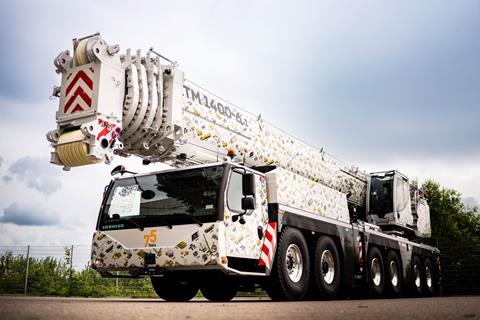German crane manufacturer Liebherr has introduced its most-powerful six axle crane, the LTM 1400-6.1.

The updated LTM 1400-6.1 succeeds the LTM 1350-6.1 in Liebherr’s range. It features a 70 m-long telescopic boom, has been designed with simplicity of use in mind, and boasts an increased lifting capacity.
Like the previous LTM 1350-6.1 model, the LTM 1400-6.1 features a Y-guying system. Particular attention has been paid to assembling this system as efficiently as possible. With just one self-assembly lift, the LTM 1400-6.1 places the guying system on the chassis, where it is then pinned in place. The hydraulic quick coupling closes automatically when the boom is luffed down between the two Y-frames. The electrical connection is established with one final movement and the telescopic boom with Y-guying is ready for use in just a few minutes.
Liebehrr added that various lattice jibs enable the new crane to work efficiently in a wide range of applications. The fixed lattice jib extends the telescopic boom by up to 45.5 m and can be mounted at an angle of 0°, 10°, 20° and 40°. As an option, the fixed jib can be adjusted between 0° and 40°. The luffing lattice jib has a length ranging from 14-80.5 m.
As per its predecessor, the total available ballast for the LTM 1400-6.1 is made up of 100 tonnes of basic ballast and an additional 40 tonnes of ballast. The hydraulic ballasting device is integrated in the counterweight frame – ballast assembly is simple, quick and does not require an auxiliary crane. Liebehrr added that the new model’s VarioBallast system is has been overhauled: the 140 tonnes of total ballast can now be set to a larger radius of 7.7 m to achieve the maximum lifting capacity. In confined spaces, the ballast radius can be reduced to 5.6 m.
The 400-tonne lift capacity unit is powered by Liebherr’s single-engine concept and a mechanical drive for the superstructure, which results in better economy, said the manufacturer.
Another new feature is the installation of various driver assistance systems to increase road safety. These include a blind spot information system, and a moving off information system that provides a visual and acoustic warning if someone is in front of the crane.
















